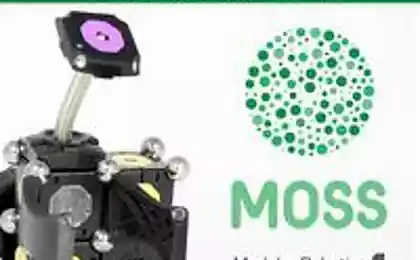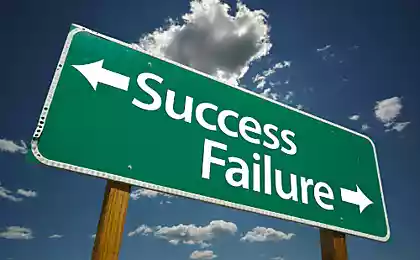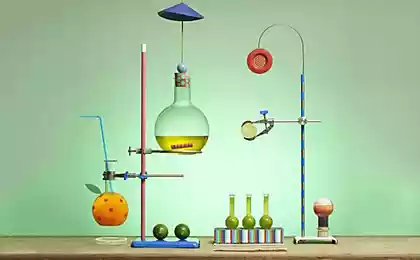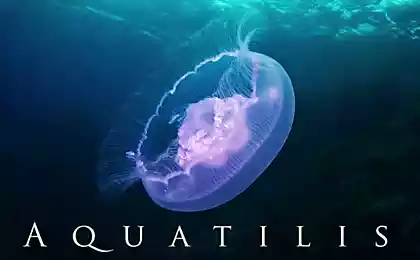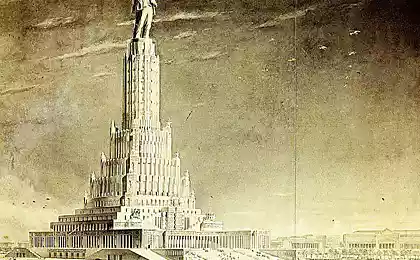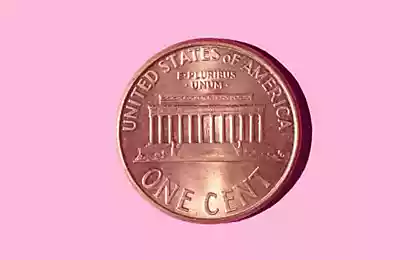584
20 most exciting projects for science fairs that have ever been created
Although the projects are intended to demonstrate at the science fair, still consist mostly of volcanoes from papier-mâché, LEGO robots, and grown in a Bank of crystals, many students nowadays go much further. With their research, the subject of which extends from the effectiveness of cancer treatment and to revolutionary discoveries in the field of processing plastic, these young guys prove that you do not have to be an adult to have amazing, world-changing scientific ideas.

1. Reactor nuclear fission
Having a budget of only $ 3,500, a high school student from Michigan Thiago Olson built a nuclear reactor in his garage when he was fifteen years old. How is it managed? He studied physics books, used guide to the vacuum pumps, and researched the Internet to find the best prices on the required parts. And although his device is not samomoderirovanie and produces a reaction only in a small scale, it still represents an impressive achievement for any teenager.
2. Hybrid diesel car
Working as a team, High school students in West Philadelphia have designed a hybrid-diesel racing car that can accelerate from zero to sixty kilometers per hour in just four seconds. And as if this speed was not impressive in itself, the car consumes just one gallon (3.75 liters; approx. mixstuff.ru of fuel on hundred kilometres of a way. Students built this car to participate in the competition "Automotive X" with a top prize of ten million dollars is the only high school students in the country who have managed to do it. They are working on the design of their car to increase their chances of winning the competition and hope to improve the performance of the car to 160 kilometers on one gallon of fuel.
3. Chemical analyzer in the form of a robot LEGO
Many of the projects for the science fairs include LEGO, but not very many – at this level, which was able to realize Anna Simpson. Her robot, built out of plastic blocks that can recognize toxic chemicals and other chemical threats, enabling people to be at a safe distance. Work Simpson won the prize of Science fair of the state of California and after some adaptation may find employment in the field of industrial and public safety.
4. Reduction in emissions of carbon dioxide
Using a process known as acid-base neutralization, and Bin Wong have developed a device that can neutralize carbon dioxide in the exhaust of cars (and other mechanisms), working on fossil fuel. It not only removes harmful substances from the air and accumulates them in the form in which they may be stored, used or sold.
5. Microbe that eats plastic
Plastic, thrown on the street, will require hundreds of years for its decomposition (if it ever will be possible), but this young scholar has found the best way. Byrd beat the leading scientists in the search for a microbe that would eat plastic, thereby accelerating the process of decomposition by more than forty percent. This project won the prize of Science fair the Canada-Wide and attracted great attention of international media.
6. Probe for space exploration
A team of four students at this Spanish school has launched a remote-controlled weather balloon into Earth's stratosphere for the implementation of weather observations and photographing from a height of more than thirty kilometers above the planet's surface.
7. Cancer and marinades for chicken
In fourteen years, Lauren Hodge gave a great start of their scientific career to this amazing project, which won a prize at the international Google Science fair. What did she find? Lauren discovered that some marinades for chicken, prevent the formation of carcinogens during the roasting process, which increases the level of carcinogens in meat. Interestingly, the most successful among the tested marinades it turned out to be a good friend to all the lemon juice.
8. Search mechanism based on the image
While most search engines work on the basis of the analysis of textual information in the Internet draft David Liu aims to create a engine that analyzes images. And although David is still working to improve its software, search engine BJ is already applied in the real world, analyzing satellite images and making relevant searches much more effective. It is an impressive achievement for a seventeen year old teenager.
9. Problems treatment for ovarian cancer
Winning the Grand prize at the Google Science fair, Bose had the opportunity to spend a few weeks underwater studying ocean life in the Galapagos Islands. Bowes found a few issues in popular methods for the treatment of ovarian cancer, and wrote a report, which more befit to be in a serious medical journal than in a year of high school.
10. Software that increases the performance of your computer
Slow computers are the curse of any office employee, but with the help of development Kevin Ellis slow cars can stay in the past. Instead of having to upgrade computers, a large amount of memory, Ellis has developed software that analyzes the processes of implementation of the programs and distributes their needs through all available processors, forcing them to work much faster. It is a wonderful program to bring him 50 thousand dollars, and the rest of the world – a way to speed up their computers, which otherwise would be thrown away.
11. Quantum computing for complex problems
Despite its name, this young genius has chosen to continue his studies at Harvard University instead of Yale. Research project Yale, entitled "Adiabatic quantum algorithms for the problems of Boolean satisfiability" analyzes the ways of using quantum computing to solve some of the most difficult and complex computational problems. Most adults don't have even the slightest idea of what was going on, so all the more surprising that this teenager is studying this area while still in high school.
12. Photodynamic cancer therapy
The final victory over cancer is still far from us, but young researchers like Amy Chiao undoubtedly help in the fight against cancer with new unorthodox ideas. Research project Amy uses photodynamic therapy to search for and kill cancer cells. The project was so promising that it won the prize of the International science and engineering fair Intel in 2010.
13. Antarctic underwater vehicle
These two teenagers came up with a wonderful way to explore climate change. With a budget of only 5 thousand dollars, they built an underwater Rover that can withstand some of the most extreme environments on Earth – such as under the ice of Antarctica. Being equipped with a television camera, the apparatus can conduct research and perform some actions, and already in use by the University of Santa Barbara in California to explore underwater life.
14. Detector nuclear weapons
Sixteen-year-old Taylor Wilson began his nuclear detection project arms at the age of only eleven years. With the support of parents and with a grant from the national security Agency, he was able to develop a device that is able to reliably detect nuclear weapons and explosives.
15. To teach the robot the English language
Luke Taylor from South Africa have prepared this project, which allows people much easier to interact with robots for the Science fair Google. Its software translates phrases of the English language into code that the robot can understand and implement – allowing practically anyone to program the robot to perform various functions. And what's even more impressive is Taylor is only thirteen years old.
16. Superior technology for creating passwords
How many of your online passwords are really reliable? If you are like most people – hardly a lot. This young man can offer you the best solution, using the monitoring of how the person is typing, to create a more secure method of network authorization. He found that passwords that use the length of the intervals between keystrokes and the length of the intervals of clicking on them, are almost as accurate and thus potentially more reliable than traditional passwords.
17. Asthma and air quality
Who won the top prize in his age category at the Science earmarke Google, the work of the Sha is critical of the quality of the air in the modern world and the impact that it has on people with breathing disorders such as asthma. She developed a mathematical model that helps to assess the impact of air quality on symptoms. And now has a few claims to the "American act clean air" on the basis of their research.
18. Mentally controlled prosthetic limbs
Hard to believe that this amazing research project originated in the mind of a fourteen year old teenager. Connecting your brain to the electroencephalograph, Srinivasan began testing a new method of improving mental control of artificial limbs. He found that the data from the EEG can help classify data and signal processing in the control limbs, which allows to significantly improve the technology of the custom control.
19. Energy management of home devices
You probably have a lot of vampires in your house – but not in the Hollywood sense of the word. This energy vampires and they suck and are wasting electricity for which you pay. Gupta in his research project found a solution to this problem, resorting to the help of domestic technology. By monitoring energy use around the house, the Gupta system allows users to manage consumption of electricity by computers and other devices in the house to reduce energy consumption and save money.
20. Software for space navigation
This bright young star of the scientific community has developed several ingenious programs that help spacecraft move faster and use less fuel during the laying rate between a lot of obstacles in outer space. Her stunning program has won a substantial award from the Intel Foundation, and is likely to give her a future career at NASA.
source
Source: /users/104





